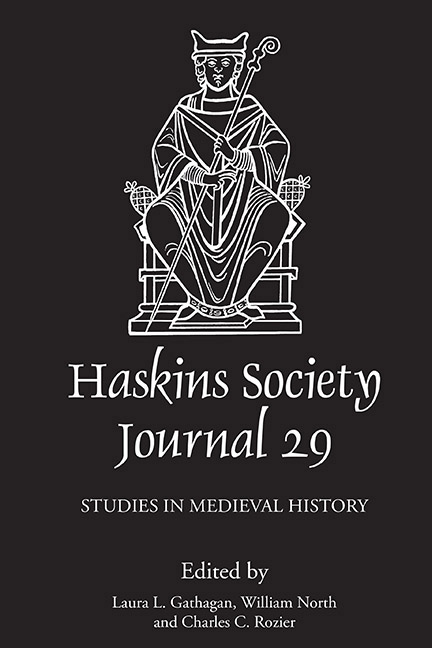Book contents
- Frontmatter
- Contents
- List of Figures and Tables
- Editors’ Note
- Abbreviations
- 1 The Longue Durée of a Symbolic System: Mounted Warriors and Horses in the Chronicon Salernitanum
- 2 Revolution(s) of Writing: Northern France, Tenth–Fourteenth Centuries
- 3 Slave or Free: The Aehtemann in Anglo-Saxon Rural Society
- 4 Norman Ducal Property in the Tenth and Eleventh Centuries: A Spatial and Chronological Analysis
- 5 The Codex Wintoniensis in its Twelfth-Century Context
- 6 The Carmen Ceccanense: A Neglected Source for the End of the Norman Kingdom of Sicily, Introduction – Edition – Translation
- 7 Succession and Interregnum in the English Polity: The Case of 1141
- 8 Crusading Participation in Normandy and its Borderlands: The Evidence from the Old French Traditions of the First Crusade
- 9 The Domesday Controversy: A Review and a New Interpretation
1 - The Longue Durée of a Symbolic System: Mounted Warriors and Horses in the Chronicon Salernitanum
Published online by Cambridge University Press: 15 October 2019
- Frontmatter
- Contents
- List of Figures and Tables
- Editors’ Note
- Abbreviations
- 1 The Longue Durée of a Symbolic System: Mounted Warriors and Horses in the Chronicon Salernitanum
- 2 Revolution(s) of Writing: Northern France, Tenth–Fourteenth Centuries
- 3 Slave or Free: The Aehtemann in Anglo-Saxon Rural Society
- 4 Norman Ducal Property in the Tenth and Eleventh Centuries: A Spatial and Chronological Analysis
- 5 The Codex Wintoniensis in its Twelfth-Century Context
- 6 The Carmen Ceccanense: A Neglected Source for the End of the Norman Kingdom of Sicily, Introduction – Edition – Translation
- 7 Succession and Interregnum in the English Polity: The Case of 1141
- 8 Crusading Participation in Normandy and its Borderlands: The Evidence from the Old French Traditions of the First Crusade
- 9 The Domesday Controversy: A Review and a New Interpretation
Summary
In a brief but richly suggestive book published in 1992, Stefano Gasparri showed how the chivalric movement in the communes of Italy, far from being a mere importation of motivations and sensibilities coming from beyond the Alps, derived from long-standing local traditions. From the civic festivals that simulated battlefield situations to the presence of precise rules of comportment that distinguished mounted lords, our sources tell us how Italian communes recognized or made use of many of the characteristics that made late medieval chivalric culture distinctive. Furthermore, surviving evidence from the first centuries of the early Middle Ages in Italy bears witness to the presence of a symbolism linked to the horse. Indeed, from the remains of rituals and gestures it is possible to detect the conscious use of a language (which I shall call ‘equestrian discourse’ for convenience) that recalls a shared cultural horizon shaped by military and hunting activity and which expressed the values of courage, personal initiative, and masculinity, and signaled membership in collective legitimating bodies, such as the army or an elite that shared styles of life and social position.
To take one significant early set of examples, we have the presence of equestrian language in the organization of rituals linked to death. In the necropolises on Italian soil dated to the sixth and seventh centuries and characterized by the practice of inhumation and by the presence of equipment within the graves, it is not uncommon to find among the objects equipment linked to the activities of the mounted warrior, such as spurs and bridles, and occasionally a saddle. Often such instruments are found together with finds that recall military activity, such as the sword, the scramasax (short sword) and the shield. In some cases, too, a full skeleton of a horse or some of its parts have been found in connection with one or more burials of ‘mounted warriors’. The presence of such burials and the high value of the elements of the riding tack that recall the equestrian discourse attest to the pervasiveness of a symbolism within local communities of sixthand seventh-century Italy.
- Type
- Chapter
- Information
- The Haskins Society Journal 292017. Studies in Medieval History, pp. 1 - 24Publisher: Boydell & BrewerPrint publication year: 2018



